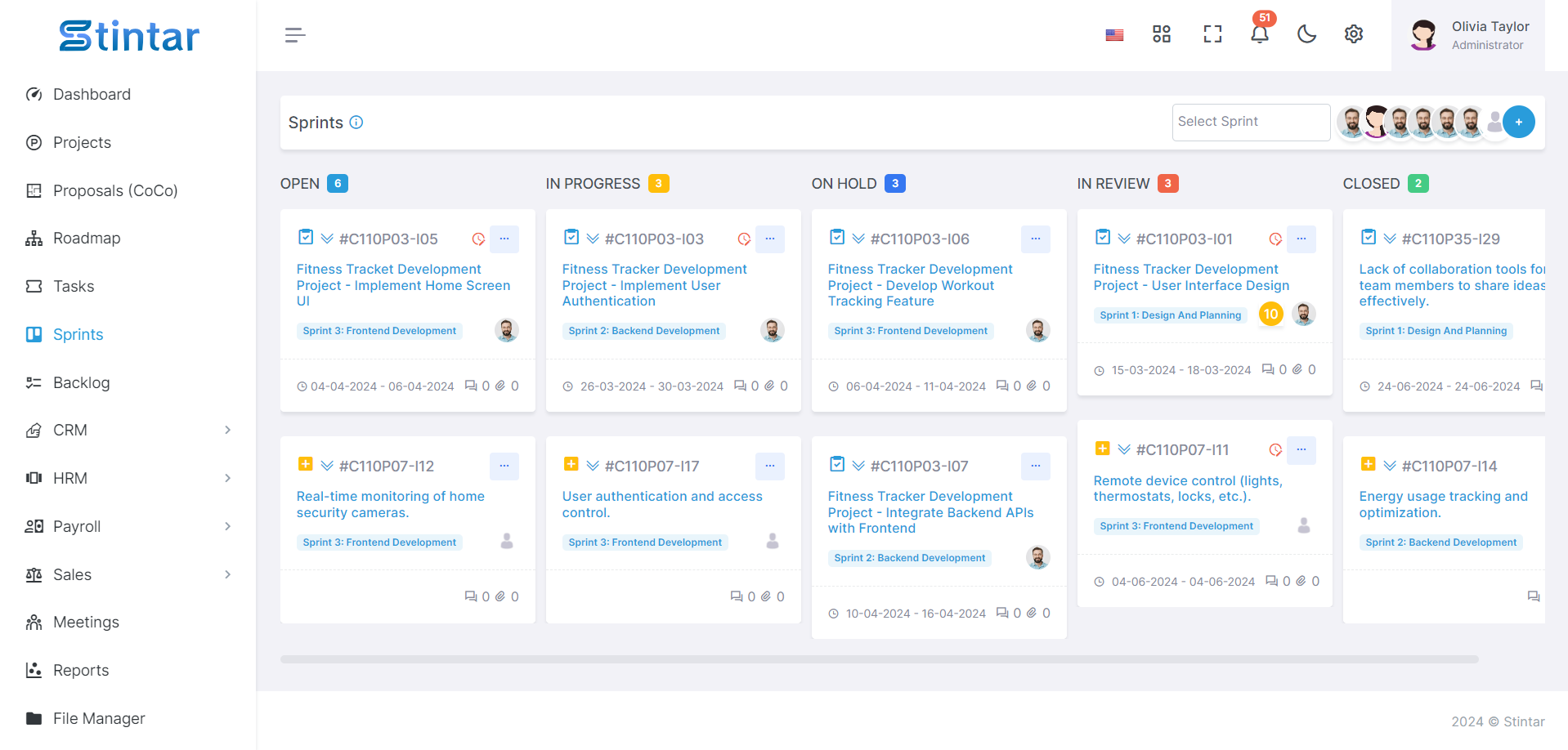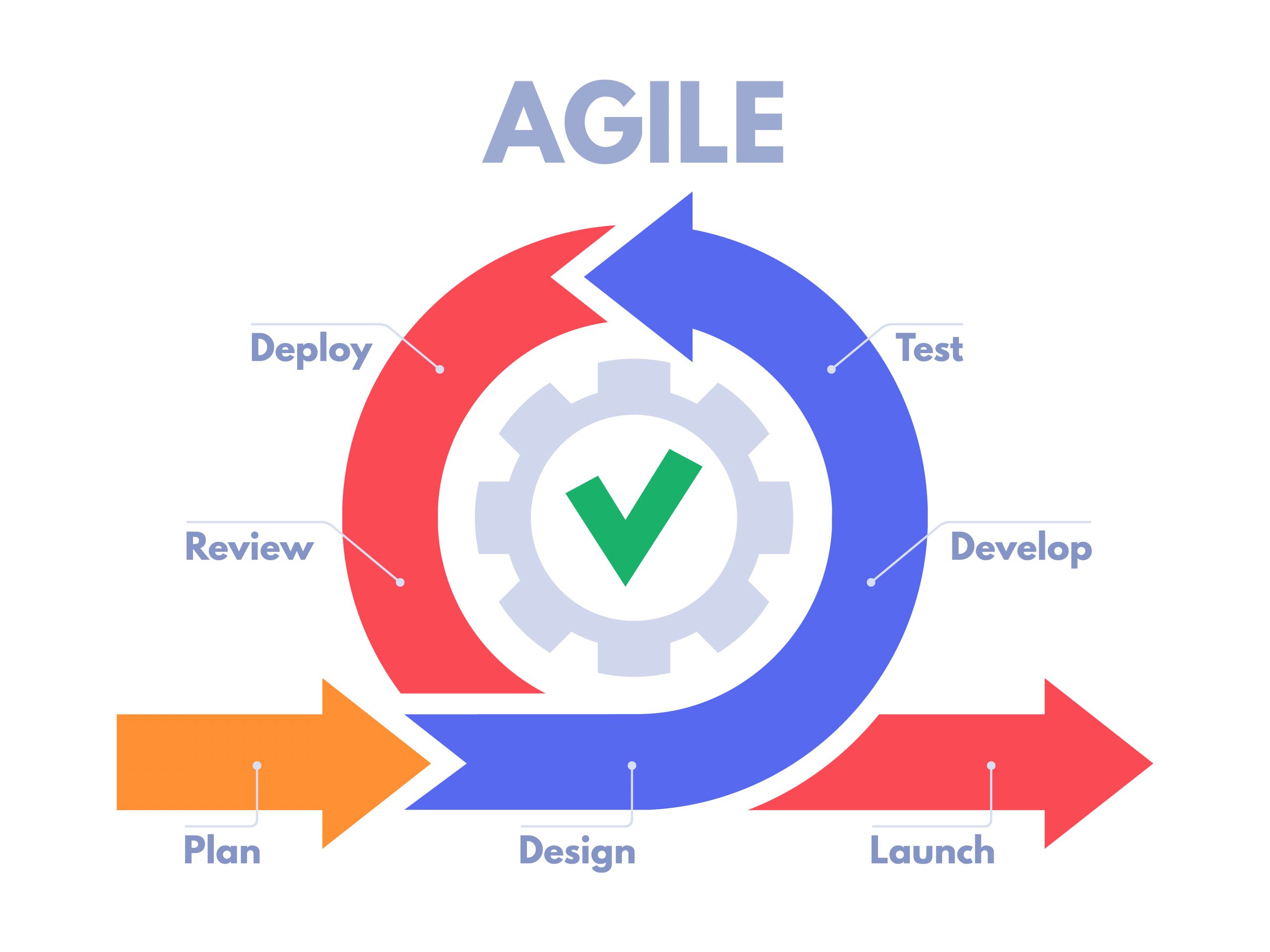Your Ultimate Guide To Agile Workflow

In today's fast-paced business landscape, adaptability and responsiveness are key to staying ahead of the curve. Agile workflow methodology has emerged as a powerful approach to project management, enabling teams to effectively navigate complex projects with flexibility and efficiency. Whether you're a seasoned project manager or just getting started, understanding the principles and practices of Agile can significantly enhance your team's productivity and success. In this comprehensive guide, we'll delve into the fundamentals of Agile workflow and provide practical tips for implementing it in your organization with Stintar (https://stintar.com).
Understanding Agile Workflow
Agile methodology originated from the software development industry but has since been adopted across various sectors, including marketing, design, and product management. At its core, Agile is based on the iterative approach, emphasizing collaboration, adaptability, and continuous improvement. Unlike traditional waterfall methods, where projects progress linearly through predefined stages, Agile breaks down the work into smaller, manageable increments called "sprints."
Key Principles of Agile
Iterative Development
Agile encourages iterative development cycles, with each sprint focusing on delivering tangible results. This iterative approach allows teams to gather feedback early and adjust their course as needed, reducing the risk of costly errors later in the project.
Customer Collaboration
Customer feedback is central to Agile methodology. By involving customers or stakeholders throughout the development process, teams can ensure that the end product meets their needs and expectations.
Adaptive Planning
Agile embraces change and uncertainty, recognizing that requirements and priorities may evolve over time. Rather than rigidly adhering to a predefined plan, Agile teams prioritize flexibility and adaptability, adjusting their plans as new information emerges.
Cross-Functional Teams
Agile promotes collaboration across different disciplines, bringing together individuals with diverse skills and perspectives to work towards a common goal. Cross-functional teams are empowered to make decisions autonomously, fostering creativity and innovation.
Implementing Agile Workflow
Define Your Goals
Clearly define the objectives and scope of your project before diving into Agile implementation. Identify key stakeholders and establish shared goals to guide your team's efforts.
Select an Agile Framework
Agile encompasses several frameworks, including Scrum, Kanban, and Lean. Choose the framework that best aligns with your team's needs and project requirements.
Build a Cross-Functional Team
Assemble a diverse team with the necessary skills and expertise to tackle the project from start to finish. Foster a collaborative environment where team members feel empowered to contribute their ideas and expertise.
Plan Your Sprints
Break down the project into smaller, manageable tasks and prioritize them based on importance and complexity. Plan your sprints, setting clear goals and timelines for each iteration with https://stintar.com.

Embrace Continuous Improvement
Encourage a culture of continuous improvement within your team, where feedback is actively sought and used to drive enhancements. Conduct regular retrospectives to reflect on past performance and identify areas for optimization.
Iterate and Adapt
Agile is all about flexibility and adaptation. Be prepared to iterate on your plans and adjust your approach based on changing circumstances or new insights.
What Sets Agile Workflow Apart?
Before delving into the intricacies of Agile workflow, it's essential to understand how it differs from traditional methodologies. Unlike rigid, linear approaches such as Waterfall, Agile embraces adaptability and iterative progress. Here's how Agile stands out:
Flexibility
Traditional methods follow a predetermined plan, often resulting in projects becoming outdated or misaligned with evolving requirements. Agile, on the other hand, accommodates change, allowing teams to pivot quickly in response to feedback or shifting priorities.
Collaboration
Agile promotes close collaboration among cross-functional teams, fostering synergy and creativity. By encouraging regular communication and shared ownership, Agile empowers teams to solve problems collectively and deliver high-quality results.
Iterative Development
Instead of delivering a final product at the end of a lengthy development cycle, Agile breaks projects into smaller, manageable iterations called sprints. This incremental approach enables continuous improvement and facilitates early and frequent delivery of valuable features.
Customer-Centricity
Agile places a strong emphasis on customer satisfaction by prioritizing customer feedback and incorporating it into the development process. By keeping the customer at the center of decision-making, Agile ensures that the end product meets their needs and expectations.
4 Key Elements of the Agile Methodology
At the heart of Agile methodology lie four fundamental principles that guide its implementation:
Individuals and Interactions Over Processes and Tools
Agile values people and communication above rigid processes or tools. By fostering a collaborative environment where team members interact openly and transparently, Agile enhances creativity and problem-solving.
Working Software Over Comprehensive Documentation
While documentation is essential, Agile prioritizes delivering working software to customers. By focusing on tangible outcomes rather than exhaustive documentation, Agile enables faster feedback loops and greater customer satisfaction.
Customer Collaboration Over Contract Negotiation
Agile encourages active involvement of customers throughout the development process. By collaborating closely with customers, teams gain valuable insights and ensure alignment with customer expectations, leading to a more successful outcome.
Responding to Change Over Following a Plan
Change is inevitable in any project, and Agile embraces it rather than resisting it. By remaining flexible and adaptive, Agile teams can respond quickly to changing requirements or market conditions, ultimately delivering better outcomes.
Agile Software Development Cycle
The Agile software development cycle, often referred to as the Agile lifecycle, comprises several iterative stages:

Initiate
In this phase, the project team defines the scope, objectives, and key stakeholders of the project. They also establish the initial backlog of features and user stories.
Plan
During the planning phase, the team prioritizes features and defines the goals for the upcoming iteration or sprint. They estimate the effort required for each task and create a detailed plan for execution.
Execute
In the execution phase, the team works collaboratively to develop, test, and integrate the features defined in the sprint backlog. Daily stand-up meetings ensure alignment and progress tracking. Execute your project with https://stintar.com/
Review
At the end of each sprint, the team conducts a sprint review to demonstrate the completed features to stakeholders and gather feedback. This feedback informs future iterations and improvements.
Evaluate
The retrospective, or post-mortem, allows the team to reflect on their performance during the sprint and identify areas for improvement. By continuously refining their processes, teams can enhance efficiency and effectiveness over time.
In today's dynamic business environment, adopting Agile workflow methodology is essential for organizations looking to stay competitive and deliver value to their customers. By embracing the principles of flexibility, collaboration, and continuous improvement, teams can streamline their processes, drive innovation, and achieve greater success in their projects with https://stintar.com. Whether you're embarking on a new initiative or looking to optimize your existing workflows, following this go-to guide to Agile workflow will set you on the path to success.